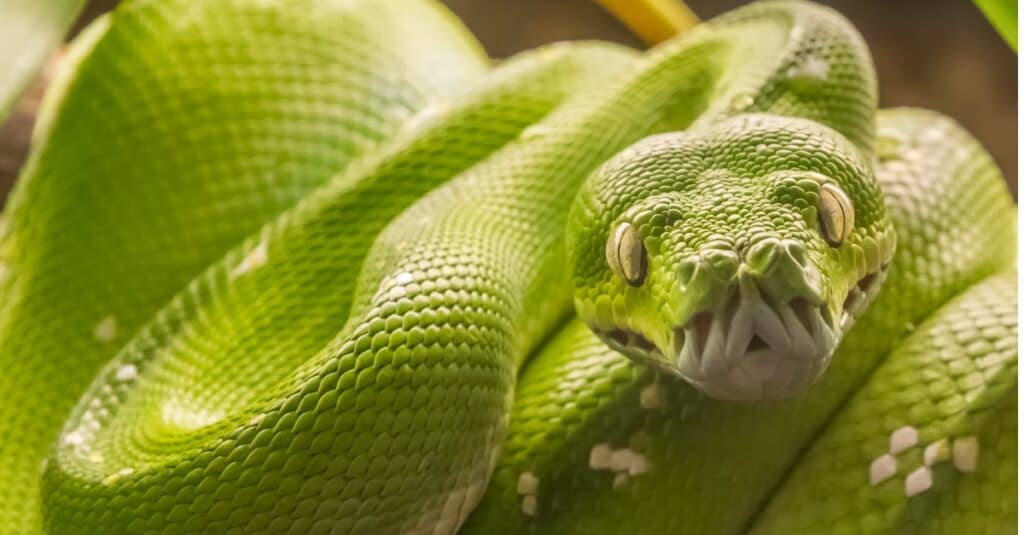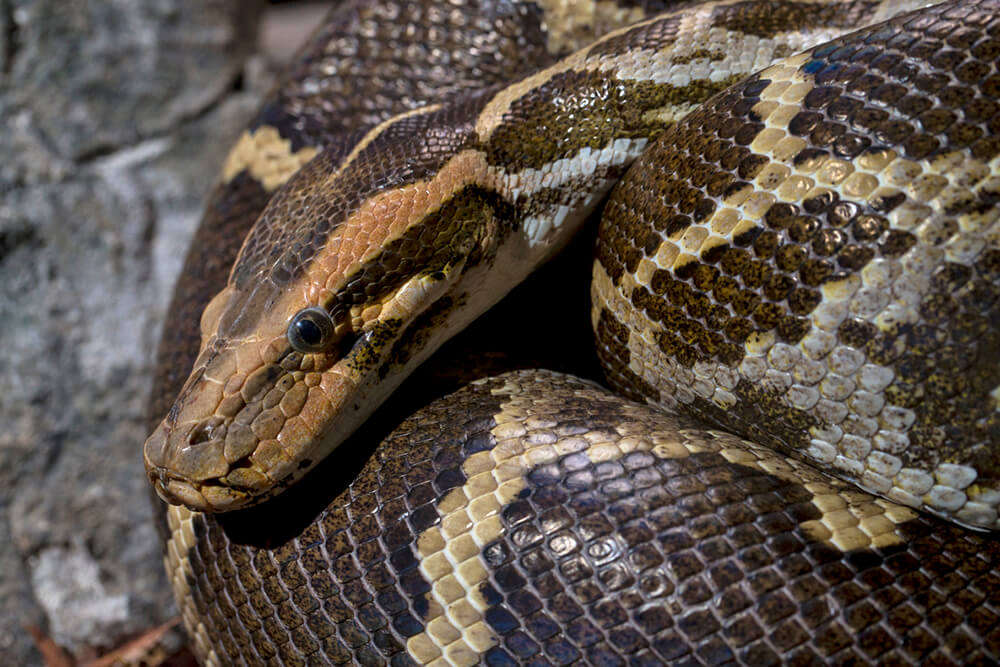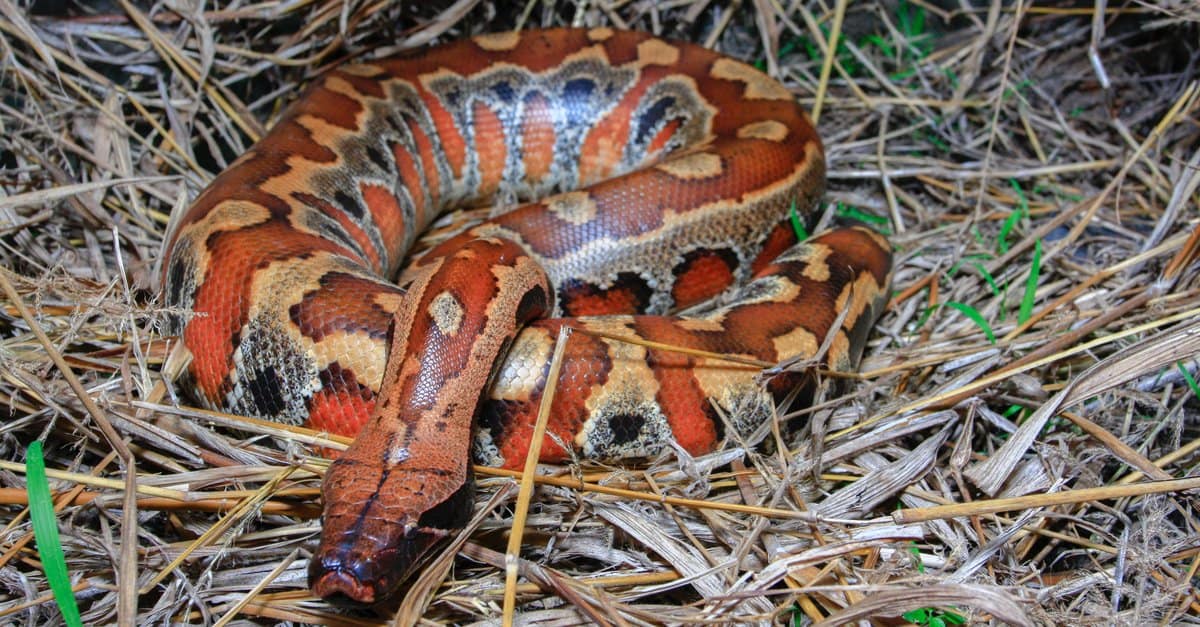Are pythons truly the menacing creatures of folklore, or is there more to these serpentine giants than meets the eye? The truth is, while undeniably impressive in size and possessing a formidable hunting strategy, pythons are not venomous, and their reputation for danger is often exaggerated.
The initial apprehension surrounding a python encounter often stems from a lack of understanding. The reality is that you don't have to fear a python's bite, at least not in terms of venom. Unlike their venomous counterparts, pythons lack the fangs and venom glands necessary to inject a toxic substance. While their bite can still be painful and inflict injury, it's not the venom that poses the threat.
It's crucial to distinguish between venom and poison. Venom is injected into the body, whereas poison is ingested or absorbed. This distinction is fundamental in understanding snake bites and the potential risks associated with different species. The absence of venomous properties places pythons in a different category compared to snakes like rattlesnakes and cobras, which possess highly potent venoms.
- Nj Vehicle Registration Renew Online Inperson More
- Microsoft 365 Teams Outlook Outage Latest Status Updates
In the complex world of snakes, understanding the nuances of their characteristics is essential. Burmese pythons, for example, are often cited as a prime example. They are not venomous. They lack the fangs and venom glands that characterize their venomous counterparts. Understanding these differences is especially critical when dealing with snake encounters, particularly in locations like the Everglades National Park, where diverse snake populations coexist.
Pythons, belonging to the family Pythonidae, are found across Asia, Africa, and Australia, but are considered "old world" snakes because they are not native to North or South America. Their impressive size and distinctive patterns make them among the most recognizable snakes globally. The sheer diversity within the python family is astounding, with 38 species spread across 11 genera.
The python genus (true pythons) boasts the highest species count, with ten distinct types. The Morelia (tree pythons) and Simalia each have six species, contributing to the incredible variety within this family. The reticulated python, renowned for its extraordinary length, holds the title of the world's longest snake. Despite being nonvenomous, this snake commands respect due to its imposing size.
- Ewr Airport Code What Does It Stand For Facts Info
- Dancing With The Stars Judges 2025 Whos Returning New Faces
A large body combined with its constricting capabilities makes the reticulated python a formidable predator, posing a real danger to both animals and people. These snakes can grow to an astonishing size, measuring between 4 and 21 feet in length. There have even been reports of them killing and consuming humans, illustrating their raw power.
Interestingly, some pythons display Batesian mimicry, a fascinating evolutionary adaptation where they mimic the appearance of venomous snakes. Their color patterns and markings often resemble those of dangerous species, deterring potential predators. This sophisticated camouflage serves as a protective mechanism.
Many individuals get confused between the biggest snakes in the world, such as reticulated pythons, boa constrictors, and anacondas. It is vital to clarify that the anaconda is, in fact, a species of boa, not a completely distinct type of snake. Both pythons and boas are constrictors, utilizing their powerful bodies to subdue their prey.
In contrast, venomous snakes, like vipers and elapids, use venom to paralyze or kill their prey. While constrictors kill by asphyxiation, venomous snakes employ a completely different strategy. Understanding these diverse methods sheds light on the intricate survival strategies employed by snakes worldwide.
It's not enough to say that pythons are distributed across Asia. The reality of their distribution is far more complex. The natural habitat range for pythons reflects their specific evolutionary needs, from the humidity to the availability of prey. The Burmese python, for instance, is a species that has had a significant impact in the Everglades National Park, where they are an invasive species.
Some snakes, like the common water snake, display a pattern that resembles a rattlesnake, especially to an untrained eye. This mimicry, a form of protection, helps them evade predators. Pythons, with their ability to constrict, kill prey through suffocation instead of injecting venom. Understanding the intricacies of their methods provides a more accurate picture.
There is more to the world of pythons than sheer size and constricting abilities. For example, the green tree python's distinct upturned nose is a special feature. They possess unique characteristics such as the upturned nose, a distinctive feature that sets them apart from other snake genera.
The world of snakes is filled with fascinating diversity. Understanding this allows us to overcome our fears and gain a deeper appreciation for the vital role that these creatures play in our ecosystem. From their role in pest control to their impact on biodiversity, snakes are a vital part of the natural world.
Despite the misconceptions, pythons are nonvenomous snakes. They possess unique adaptations and behaviors that have allowed them to thrive in their respective environments. As we dispel the myths, we learn to respect the true nature of these fascinating creatures.
Here's a table summarizing key facts about Pythons:
| Attribute | Details |
|---|---|
| Venomous? | No |
| Fangs? | No |
| Primary Hunting Method | Constriction |
| Geographic Distribution | Asia, Africa, Australia |
| Notable Species | Reticulated Python, Burmese Python, Green Tree Python |
| Mimicry | Some species exhibit Batesian mimicry, resembling venomous snakes |
| Size Range | Varies greatly by species; reticulated pythons can reach 21 feet |
For further information, visit:
Britannica - Python



Detail Author:
- Name : Max Lindgren I
- Username : heidenreich.caitlyn
- Email : melissa42@treutel.info
- Birthdate : 1987-03-24
- Address : 17392 Newell Place Blaisefurt, LA 00601-5098
- Phone : +1 (949) 672-8850
- Company : Johnston-Gislason
- Job : Electrical Sales Representative
- Bio : Aut esse omnis totam debitis est. Vel nostrum perferendis molestiae optio autem et similique et.
Socials
instagram:
- url : https://instagram.com/blandah
- username : blandah
- bio : Consectetur sed sed sint totam unde culpa. Veniam explicabo consequatur eius temporibus.
- followers : 4349
- following : 187
tiktok:
- url : https://tiktok.com/@hilton2964
- username : hilton2964
- bio : Ipsum excepturi sed aut reprehenderit quod.
- followers : 4056
- following : 65
facebook:
- url : https://facebook.com/blandah
- username : blandah
- bio : Quae pariatur est voluptatum nobis dolor.
- followers : 4532
- following : 714
linkedin:
- url : https://linkedin.com/in/blanda2005
- username : blanda2005
- bio : Eius necessitatibus officiis ad sunt nulla et.
- followers : 799
- following : 778
twitter:
- url : https://twitter.com/blanda1970
- username : blanda1970
- bio : Veniam dolor possimus est fugit maxime assumenda sed. Soluta numquam autem sunt maxime accusamus.
- followers : 2935
- following : 2887